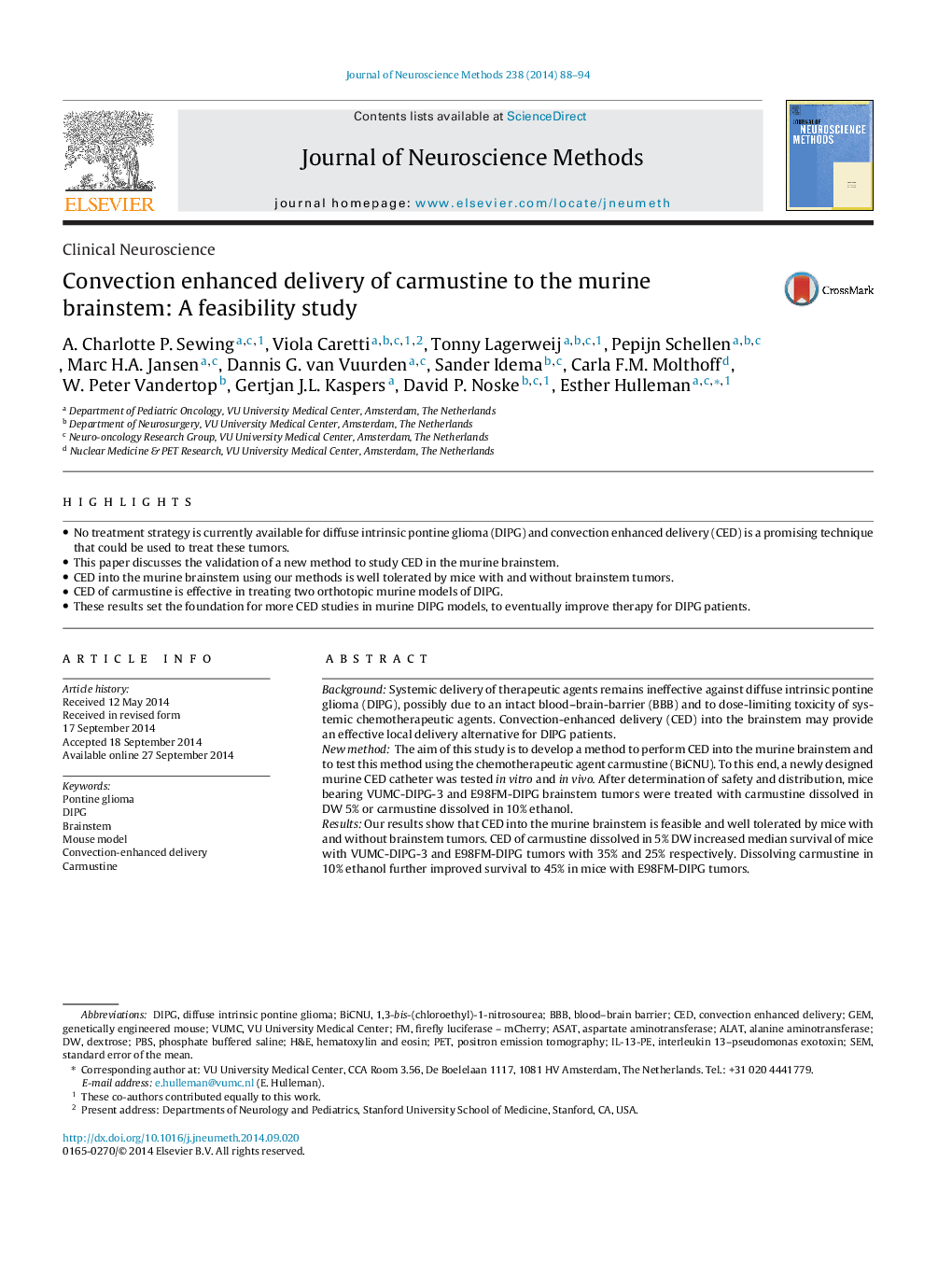| کد مقاله | کد نشریه | سال انتشار | مقاله انگلیسی | نسخه تمام متن |
|---|---|---|---|---|
| 6268451 | 1614631 | 2014 | 7 صفحه PDF | دانلود رایگان |

- No treatment strategy is currently available for diffuse intrinsic pontine glioma (DIPG) and convection enhanced delivery (CED) is a promising technique that could be used to treat these tumors.
- This paper discusses the validation of a new method to study CED in the murine brainstem.
- CED into the murine brainstem using our methods is well tolerated by mice with and without brainstem tumors.
- CED of carmustine is effective in treating two orthotopic murine models of DIPG.
- These results set the foundation for more CED studies in murine DIPG models, to eventually improve therapy for DIPG patients.
BackgroundSystemic delivery of therapeutic agents remains ineffective against diffuse intrinsic pontine glioma (DIPG), possibly due to an intact blood-brain-barrier (BBB) and to dose-limiting toxicity of systemic chemotherapeutic agents. Convection-enhanced delivery (CED) into the brainstem may provide an effective local delivery alternative for DIPG patients.New methodThe aim of this study is to develop a method to perform CED into the murine brainstem and to test this method using the chemotherapeutic agent carmustine (BiCNU). To this end, a newly designed murine CED catheter was tested in vitro and in vivo. After determination of safety and distribution, mice bearing VUMC-DIPG-3 and E98FM-DIPG brainstem tumors were treated with carmustine dissolved in DW 5% or carmustine dissolved in 10% ethanol.ResultsOur results show that CED into the murine brainstem is feasible and well tolerated by mice with and without brainstem tumors. CED of carmustine dissolved in 5% DW increased median survival of mice with VUMC-DIPG-3 and E98FM-DIPG tumors with 35% and 25% respectively. Dissolving carmustine in 10% ethanol further improved survival to 45% in mice with E98FM-DIPG tumors.Comparison with existing methodsSince genetically engineered and primary DIPG models are currently only available in mice, murine CED studies have clear advantages over CED studies in other animals.ConclusionCED in the murine brainstem can be performed safely, is well tolerated and can be used to study efficacy of chemotherapeutic agents orthotopically. These results set the foundation for more CED studies in murine DIPG models.
Journal: Journal of Neuroscience Methods - Volume 238, 30 December 2014, Pages 88-94